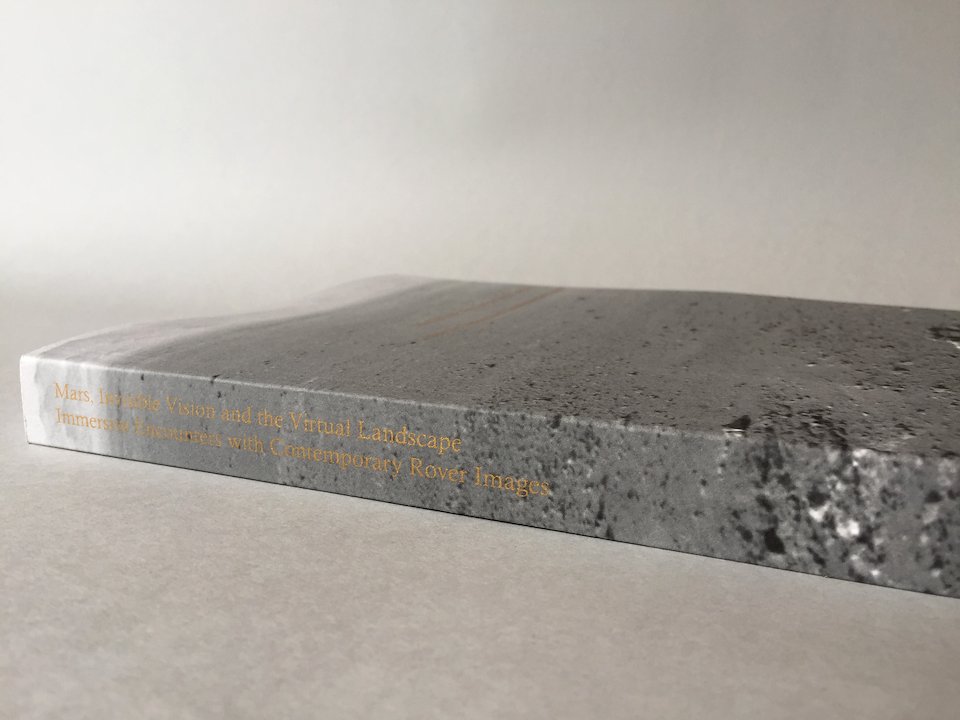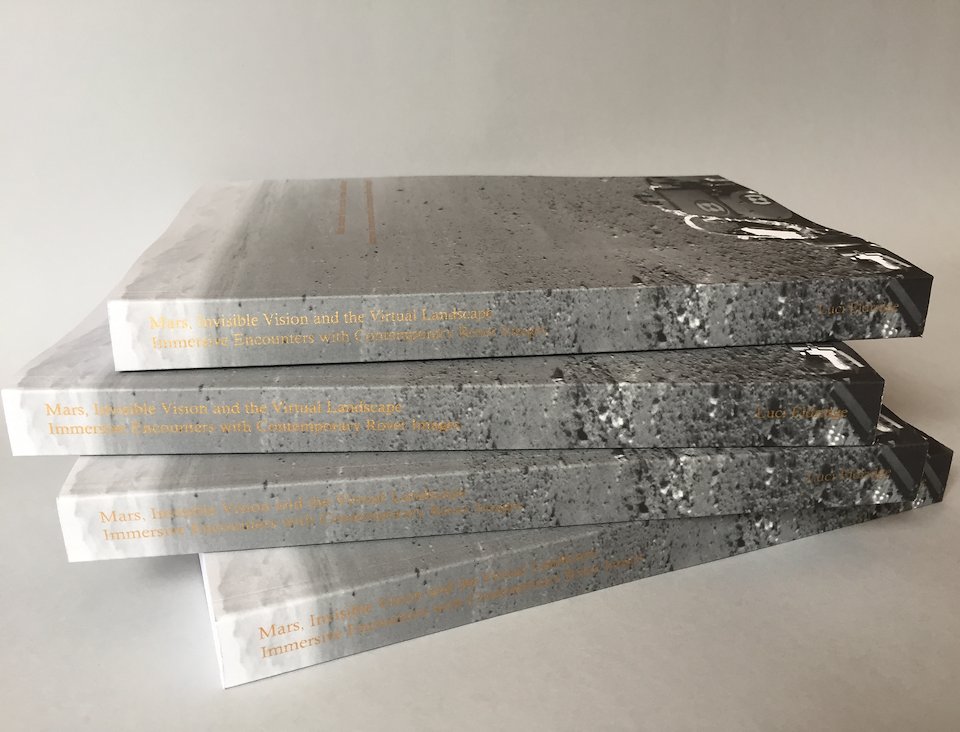

Mars, Invisible Vision and the Virtual Landscape:
Immersive Encounters with Contemporary Rover Images
PhD by thesis, Critical and Historical Studies, School of Humanities, Royal College of Art
2017
How do contemporary imaging devices and the forms in which images are displayed affect our perception of Mars? How are scientists and engineers visually exploring, experiencing and navigating this uninhabitable terrain? Can we better understand this virtual landscape through immersive imaging techniques, or are these simply illusions? At what point does the glitch invade these immersive spaces, throwing us back into the realm of the image? And finally, can the glitch be seen as a method towards another kind of visibility, enabling us to ‘see’ and encounter Mars in productive ways?
Through the analysis of contemporary representations of the Martian terrain, Mars, Invisible Vision and the Virtual Landscape: Immersive Encounters with Contemporary Rover Images offers a new contribution to studies of the digital and virtual image. Specifically addressing immersive image forms used in Mars exploration the research is structured around four main case studies: life-size illusions such as panoramas; 3D imaging; false colour imaging; and the concept of a ‘Mars Yard’. The thesis offers a new understanding of human interaction with a landscape only visible through a screen, and how contemporary scientific imaging devices aim to collapse the frame and increase a sense of immersion in the image. Arguing that these representations produce inherently virtual experiences, their transportive power is questioned, highlighting the image as reconstructed – through the presence of a glitch, illusion is broken, revealing the image-as-image.
This thesis takes an interdisciplinary approach in which scientific images are analysed through the prism of photography’s relationship to reality, theories of vision and perception, representations of landscape, and digital and virtual image theory. At the heart of this thesis is the act of looking; critical and speculative writing is used to convey immersive encounters with images at NASA and the Jet Propulsion Laboratory (USA); University College London’s Regional Planetary Imaging Facility; Airbus Defence and Space (UK); the photographic archive at the V&A; and the Panorama Mesdag (Netherlands). The research re-examines scientific forms of images against examples from the history of visual culture (be it art or popular culture) to draw parallels between different ways of seeing, representing and discovering the unknown.
The eyes of the Mars rovers provide viewpoints through which we regard an alien terrain: windows upon unknown worlds. Rover images bridge a gap between what is known and unknown, between what is visible and invisible. The rover is our surrogate, an extension of our vision that portrays an intuitively comprehensible landscape. Yet this landscape remains totally out of reach, millions of miles away. This distance is an impenetrable boundary – both physically and metaphorically – that new technologies are trying to break. Mars, Invisible Vision and the Virtual Landscape offers a two-way impact, constituting a new approach to the relationship between real and imagined images in order to demonstrate that the real Mars, however it is represented and perceived, remains distant and detached.